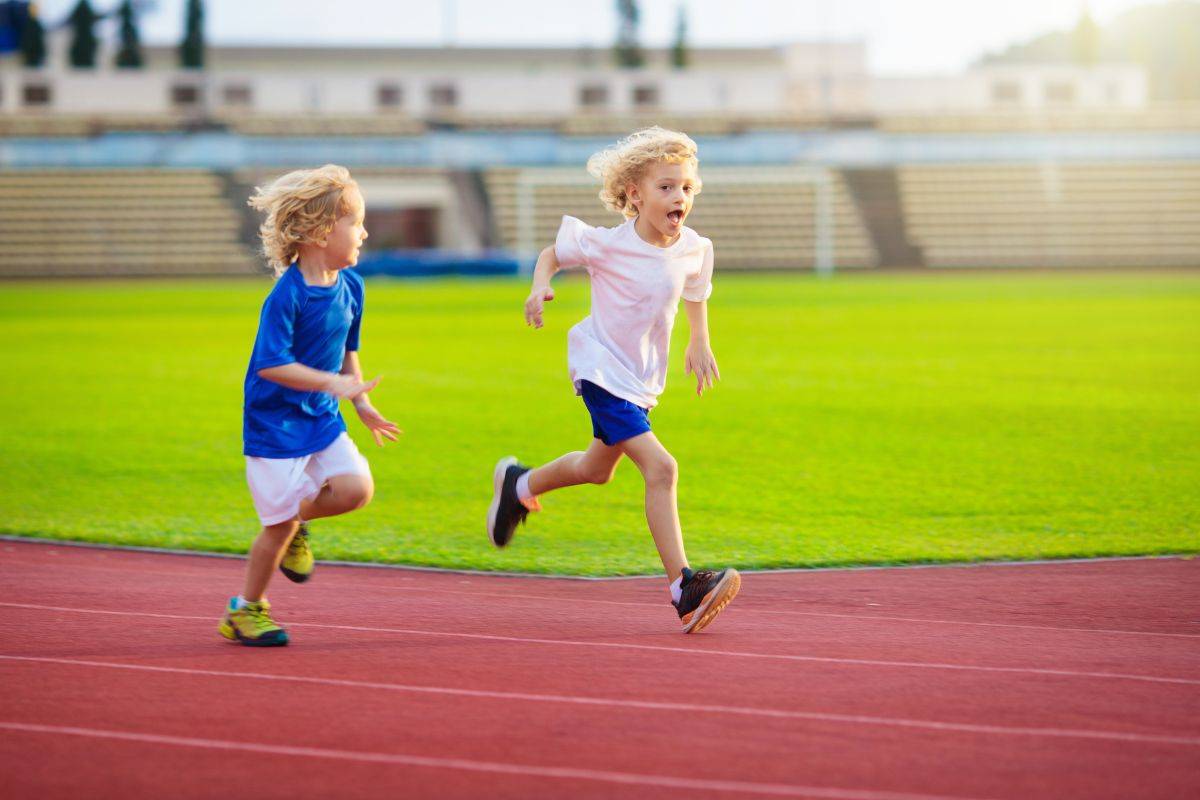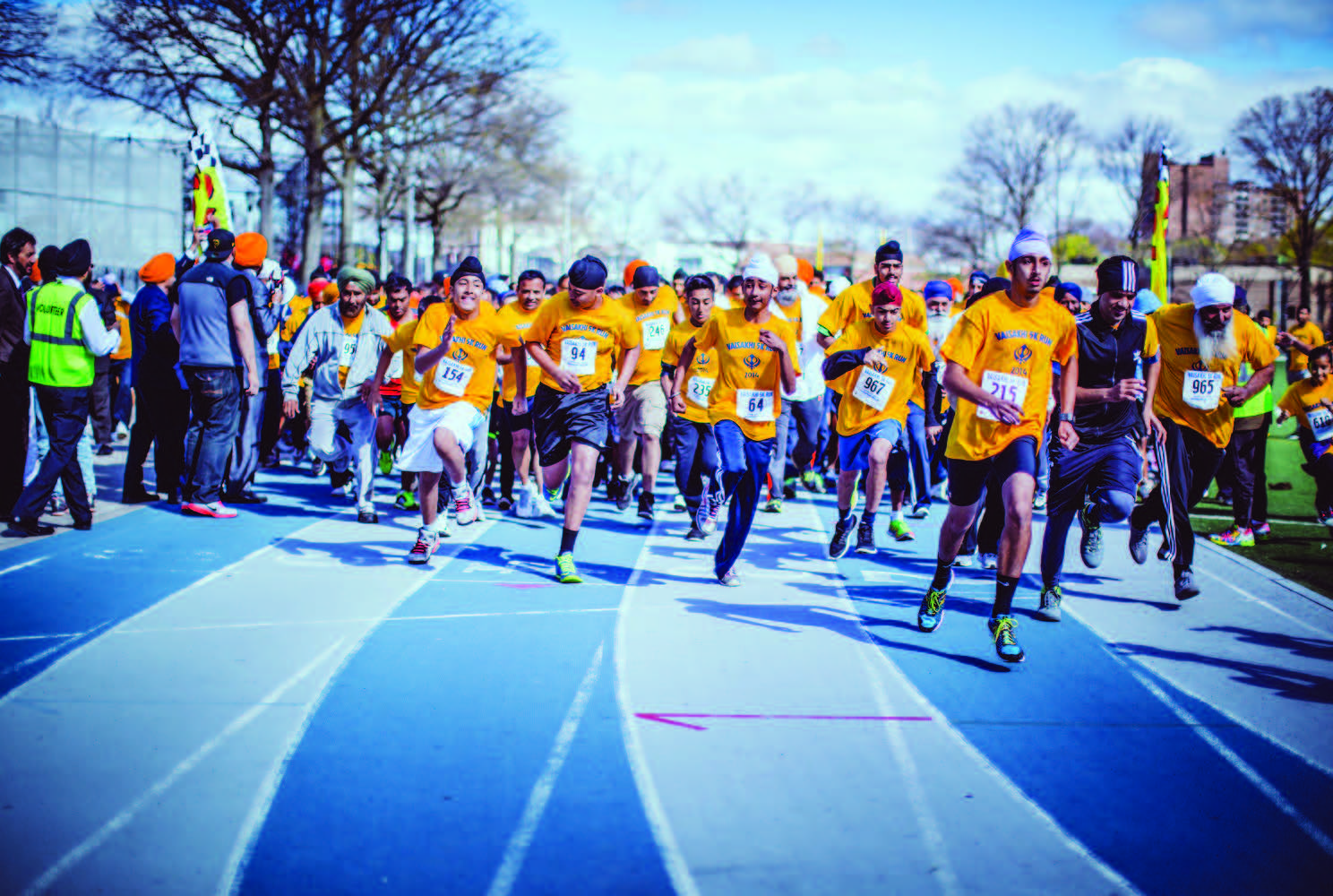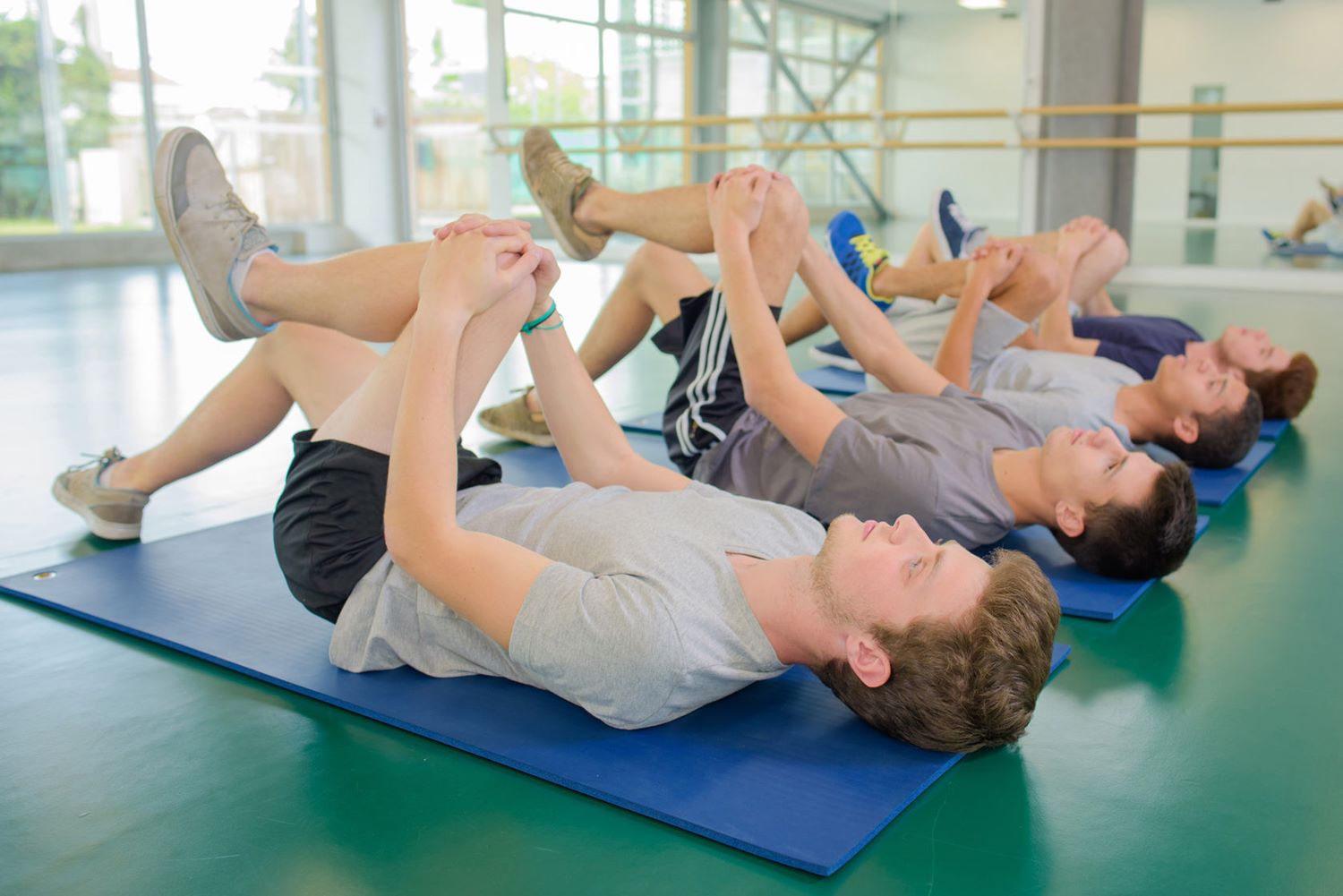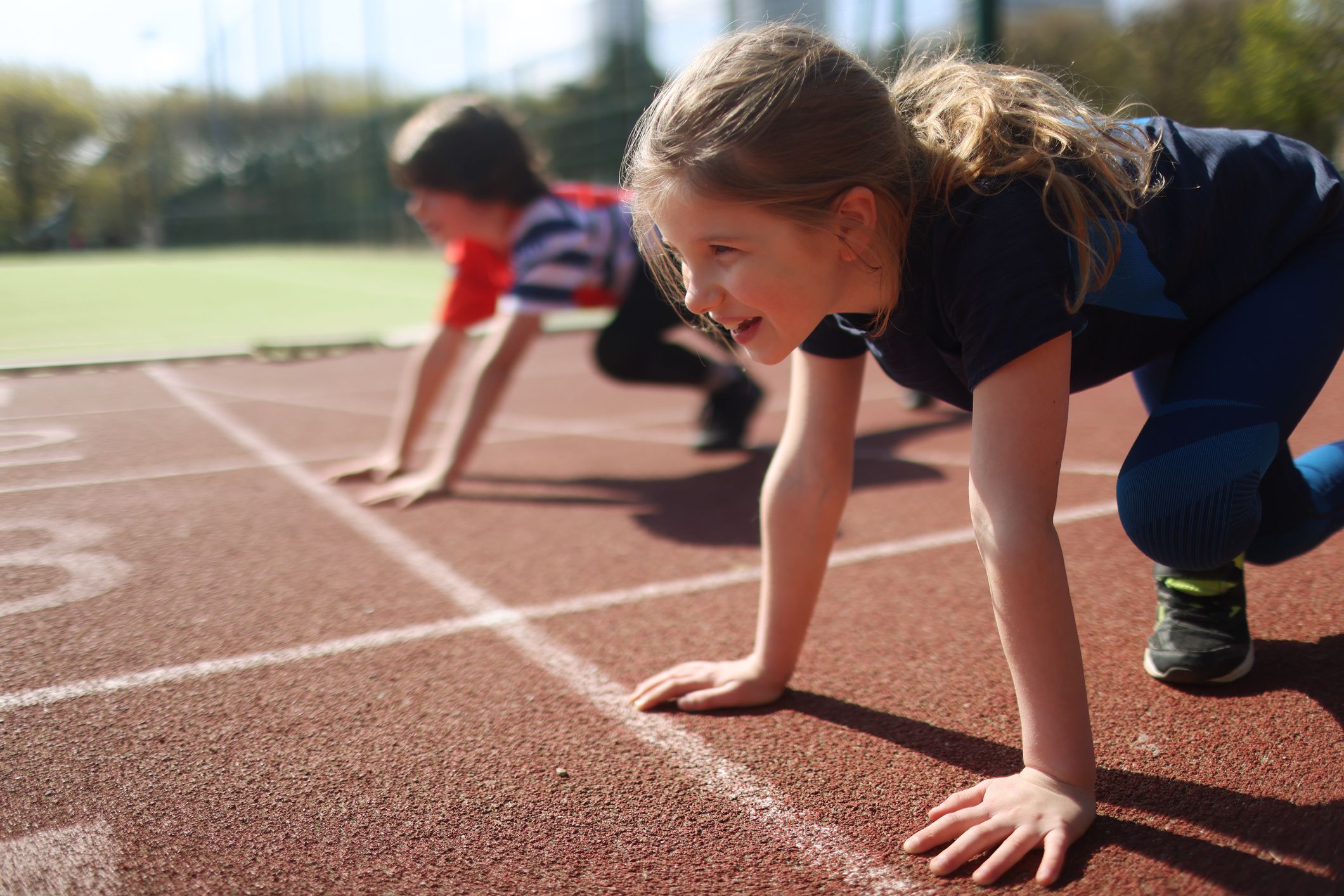

Featured
How To Correct A Child’s Running Form
Published: October 15, 2023
Learn the best techniques to correct your child's running form with this featured guide. Help them develop proper running habits and prevent potential injuries.
Introduction
Running is a fundamental skill that children develop at an early age. It not only helps them stay active and maintain a healthy lifestyle but also improves their coordination and motor skills. However, it is essential to ensure that children have proper running form to prevent injuries and maximize their performance.
In this article, we will explore the importance of correcting a child’s running form and provide tips and techniques to help them develop good habits early on. By addressing common running form errors and implementing appropriate strengthening exercises, parents and coaches can play a crucial role in promoting healthy running habits in children.
Correcting a child’s running form is essential for several reasons. First and foremost, it helps prevent injuries. Running with improper form can put excess strain on joints, muscles, and ligaments, increasing the risk of sprains, strains, and other musculoskeletal issues. By teaching children the correct way to run, we can significantly reduce the likelihood of these injuries occurring.
Additionally, correcting running form can improve a child’s overall performance. By learning efficient running mechanics, children can run with greater speed, endurance, and efficiency. This can be especially beneficial for those participating in organized sports or looking to excel in competitive running events.
Beyond the physical benefits, teaching children proper running form also instills good habits and a solid foundation for their future athletic endeavors. When children learn the importance of posture, arm swing, stride length, and foot strike early on, they are more likely to carry these habits into their adolescence and adulthood.
Assessing a child’s running form is the first step towards identifying any areas that need improvement. This assessment can be done by observing the child while they run or by filming them for further analysis. Look for specific indicators such as body posture, arm movement, leg alignment, and foot strike to pinpoint areas that require attention.
By addressing these issues and implementing corrective measures, we can help children develop better running form and set them up for success in their athletic pursuits. So let’s dive in and explore the most common running form errors in children and how to correct them.
The Importance of Correcting a Child’s Running Form
Correcting a child’s running form is of utmost importance for their overall health, performance, and long-term well-being. When children run with improper form, it can lead to a range of issues, including injuries, inefficiency, and hindered athletic development. By addressing these form errors early on, parents and coaches can help children establish proper habits that will benefit them throughout their lives.
One of the primary reasons to correct a child’s running form is to prevent injuries. Running with improper form can put unnecessary stress on joints, muscles, and tendons, increasing the risk of sprains, strains, and overuse injuries. By teaching children correct posture, arm swing, and foot strike, we can significantly reduce the chance of these injuries occurring. It is especially crucial since children’s bodies are still developing, and they may be more susceptible to injury.
In addition to injury prevention, correcting running form can greatly improve a child’s athletic performance. When a child runs with proper posture, it allows for better alignment of the body, which translates to more efficient movement. Correct arm movement and stride length can also contribute to improved speed, endurance, and overall running efficiency. By addressing running form errors, we can help children unlock their full potential and excel in their athletic pursuits.
Furthermore, developing good running habits early on can have a long-lasting impact on a child’s overall physical health and well-being. Running with proper form promotes proper muscle activation and balance, which can improve overall body stability and coordination. It also establishes a solid foundation for future athletic endeavors, as children who learn correct running form are more likely to carry these habits into adolescence and adulthood.
Not only does correcting a child’s running form have physical benefits, but it also has mental and emotional advantages. Running with proper form can boost a child’s confidence and self-esteem. When children feel comfortable and in control of their movements, they are more likely to enjoy running and engage in physical activity regularly. This positive experience can help instill a lifelong love for running and a commitment to maintaining an active and healthy lifestyle.
In summary, correcting a child’s running form is crucial for injury prevention, improved performance, and long-term physical well-being. By addressing form errors and teaching proper running mechanics, parents and coaches can set children up for success in their athletic pursuits. It is not only about optimizing physical health but also nurturing a positive mindset towards running and fostering a lifelong love for the sport.
Assessing the Child’s Running Form
Assessing a child’s running form is a crucial step in determining any areas that need improvement. By observing and analyzing their movements, parents and coaches can identify specific form errors and develop a targeted approach to address them. Here are some key aspects to consider when assessing a child’s running form:
1. Posture: Observe the child’s overall body posture while running. Ideally, they should maintain an upright position with a slight forward lean from the ankles. Avoid excessive leaning forward or backward, as it can affect balance and efficiency.
2. Arm Swing: Pay attention to the child’s arm movement. The arms should be relaxed and bent at about a 90-degree angle. They should swing naturally, back and forth in line with the body, helping to maintain balance and generate momentum.
3. Leg Alignment: Look at the child’s leg alignment as they run. The legs should move in a straight line, with knees and feet pointing forward. Avoid excessive inward (pronation) or outward (supination) rolling of the feet, as it can lead to biomechanical issues and potential injuries.
4. Foot Strike: Notice how the child’s feet make contact with the ground. Aim for a midfoot strike, where the foot lands underneath the body, utilizing the arch of the foot to absorb shock. Avoid striking the ground with the heel or forefoot, as it can increase the risk of injuries such as shin splints or stress fractures.
5. Cadence: Assess the child’s running cadence, which refers to the number of steps taken per minute. A higher cadence generally promotes faster running and reduces the risk of overstriding. The optimal cadence for most runners is around 170-180 steps per minute.
It can be helpful to film the child while running to get a more detailed analysis of their form. Use a smartphone or video camera to record them from different angles, such as front, side, and back. This allows for a more accurate assessment of form errors and potential areas for improvement.
After assessing the child’s running form, it is important to identify the specific areas that require attention. Prioritize one or two key form errors to work on at a time, rather than overwhelming the child with too many corrections. This systematic approach allows for focused training and gradual improvement.
By conducting an assessment of a child’s running form, parents and coaches can gain valuable insights into their mechanics and pinpoint the areas that need improvement. This assessment sets the foundation for implementing the necessary corrective measures and guides the training process to help the child develop better form and optimize their running performance.
Common Running Form Errors in Children
Children may naturally develop certain running form errors as they learn to run and engage in physical activities. It is essential to be aware of these common form errors and take steps to correct them early on. Here are some typical running form errors seen in children:
1. Slouching or Rounded Shoulders: Many children tend to slouch or hunch their shoulders while running. This can lead to poor posture, limited lung capacity, and inefficient movement. Encourage them to keep their shoulders relaxed and pulled back, maintaining an upright position.
2. Excessive Arm Movement: Some children may exaggerate their arm swing, flailing their arms side-to-side or crossing them in front of their body. This excessive arm movement can waste energy and throw off balance. Teach them to keep their arm swing controlled and in line with their body.
3. Overstriding: Overstriding refers to taking excessively long strides, where the foot lands in front of the body’s center of mass. This can increase the impact on the legs and lead to inefficient movement. Encourage children to take shorter, quicker steps, aiming for a midfoot strike under their hips.
4. Heel Striking: Another common form error is landing heavily on the heel instead of the midfoot. Heel striking can increase the risk of injuries and result in inefficient running mechanics. Teach children to focus on landing softly and rolling through the foot from heel to toe.
5. Uneven Arm Swing: Some children may exhibit uneven arm movement, with one arm swinging more than the other. This can disrupt balance and coordination. Encourage them to be conscious of their arm movement, ensuring that both arms swing evenly.
6. Head and Neck Alignment: Children may have a tendency to tilt their heads down or look side-to-side while running. This can affect their body alignment and lead to inefficient movement patterns. Encourage them to keep their gaze forward, looking straight ahead.
These are just a few examples of common running form errors in children. It is important to note that each child is unique, and specific form errors may vary. By identifying these errors, parents and coaches can address them early on and work towards correcting them through targeted training and reinforcement.
Remember, it is crucial to approach form correction with patience and positivity. Provide constructive feedback and offer guidance and support to help children develop better running form gradually. Celebrate their progress and encourage a growth mindset, emphasizing that with practice and perseverance, they can improve their running mechanics and become more efficient and confident runners.
Correcting Running Form Errors: Tips and Techniques
Addressing and correcting running form errors in children requires a combination of awareness, practice, and targeted exercises. Here are some helpful tips and techniques to help children develop better running form:
1. Focus on Body Awareness: Teach children to pay attention to their body position while running. Encourage them to be mindful of their posture, arm movement, and foot strike. Developing body awareness helps them make adjustments and maintain proper form.
2. Provide Visual Cues: Using visual cues can be an effective way to correct form errors. Show children images or videos of proper running form and ask them to mimic the movements. This visual guidance helps them better understand the desired form and make the necessary adjustments.
3. Use Verbal Prompts: Give children verbal cues and reminders while they are running. Use phrases like “stand tall,” “relax your shoulders,” or “quick steps, light feet” to reinforce proper form in real-time. Positive reinforcement and gentle reminders can help children internalize correct running mechanics.
4. Practice Drills: Incorporate specific drills and exercises into their training sessions to target form correction. For example, focus on arm swing by having them do high knees or incorporate skipping exercises. You can also use cones or markers to practice quick and light footwork.
5. Gradual Progression: Start with simple adjustments and gradually build upon them. It is important not to overwhelm children with too many corrections at once. Gradual progression allows children to focus on one aspect of form improvement before moving on to the next, ensuring better retention and understanding.
6. Strengthening Exercises: Include exercises that target specific muscle groups involved in proper running form. Core exercises like planks or bridges help stabilize the body while running. Strengthening exercises for the glutes, quadriceps, and calf muscles can also contribute to better overall form.
7. Practicing Good Breathing Technique: Teach children to breathe deeply and rhythmically while running. Encourage them to take full breaths, expanding their diaphragm and exhaling fully. Good breathing technique helps maintain oxygen flow, allowing for greater endurance and relaxation while running.
8. Set Realistic Goals: Help children set realistic goals and track their progress. Set benchmarks for improved form and celebrate milestones along the way. This not only provides motivation but also reinforces the importance of proper form and the benefits it brings.
9. Seek Professional Guidance: If you notice persistent form errors or are unsure about the correct techniques to teach your child, consider seeking guidance from professionals such as physical therapists or running coaches. They can provide personalized assessments, form correction strategies, and training plans tailored to your child’s needs.
Remember, correcting running form errors is a gradual process that requires patience and consistency. Encourage children to embrace the journey and understand that form improvement takes time. With practice, guidance, and a positive mindset, children can develop better running mechanics and enjoy the benefits of improved performance and reduced risk of injuries.
Strengthening Exercises for Better Running Form
Strengthening exercises play a vital role in improving running form as they help develop the necessary strength, stability, and coordination needed for efficient running. Here are some key exercises that can help children enhance their running mechanics:
1. Core Exercises: A strong core provides stability and helps maintain proper posture while running. Include exercises such as planks, side planks, Russian twists, and flutter kicks to engage the core muscles.
2. Glute Bridges: Strengthening the glute muscles helps stabilize the hips and maintain proper alignment. Have children lie on their back with knees bent and feet flat on the ground, then lift their hips off the floor, engaging the glutes. Repeat the exercise for several repetitions.
3. Squats: Squats are effective for strengthening the quadriceps, hamstrings, and glutes. Teach children to squat down as if sitting back into a chair, keeping the knees in line with the toes and maintaining a neutral spine. Perform squats with bodyweight or gradually add resistance using dumbbells or resistance bands.
4. Calf Raises: Strong calf muscles help with push-off and foot stability. Have children stand on a step or elevated surface with the heels hanging off the edge, then raise and lower their heels to work the calf muscles. Progress the exercise by holding weights or performing single-leg calf raises.
5. Lateral Lunges: Lateral lunges target the inner and outer thighs, improving hip stability and overall lower body strength. Instruct children to step out to the side, keeping the planted foot pointing forward, and bending the knee on the side they step towards. Alternate sides for a complete workout.
6. Single-Leg Balance: Balance exercises help improve stability and proprioception, enhancing overall running mechanics. Have children stand on one leg, maintaining a stable position for a set amount of time. Progress the exercise by incorporating small knee bends or performing it on an unstable surface like a balance board.
7. Plyometric Exercises: Plyometric exercises such as jumping lunges, squat jumps, and bounding can improve leg power and explosiveness. They mimic the dynamic movements used in running and enhance overall athletic performance.
8. Skipping: Skipping is a fun and effective exercise for improving coordination, balance, and leg strength. Encourage children to perform various skipping variations like high knees, double-leg skips, and single-leg skips.
9. Agility Drills: Incorporating agility drills like ladder drills, cone drills, or shuttle runs helps children improve their footwork, coordination, and quickness. These exercises simulate the dynamic movements required during running and enhance overall agility and running form.
It is essential to supervise children during these exercises, ensuring proper form and progression. Start with bodyweight exercises and gradually add resistance or increase the difficulty as the child becomes more comfortable and stronger.
Remember to incorporate a variety of exercises into their training routine and focus on strengthening all major muscle groups involved in running, including the core, glutes, quadriceps, hamstrings, and calves. By improving overall strength and stability, children can develop better running form and enhance their performance while reducing the risk of injuries.
Practicing Proper Running Form
Practicing proper running form is crucial for children to develop efficient and injury-free running mechanics. Continuous reinforcement and practice of correct form can help children internalize the proper techniques. Here are some strategies to help children practice and improve their running form:
1. Start with Warm-Up Drills: Begin each running session with a series of warm-up drills that focus on proper form. Incorporate exercises like high knees, butt kicks, and ankle circles to activate the muscles, increase mobility, and prepare the body for running.
2. Focus on Posture: Encourage children to maintain good posture while running. Remind them to stand tall, keep their chest up, and avoid slouching or leaning forward excessively. Proper posture helps to align the body and optimize running mechanics.
3. Arm Swing Awareness: Emphasize the importance of proper arm swing while running. Instruct children to relax their arms, keep their elbows at a 90-degree angle, and swing them back and forth in sync with their stride. The arms should not cross the midline of the body.
4. Stride Length and Cadence: Teach children to find a balance between stride length and cadence. Encourage them to take shorter, quicker steps to avoid overstriding, as it can lead to inefficient movement and increased risk of injury. Aim for a comfortable cadence of around 170-180 steps per minute.
5. Foot Strike: Reinforce the importance of a proper foot strike. Teach children to land midfoot to evenly distribute the impact and prevent excessive stress on specific joints. A softer, quieter footstrike indicates a more efficient running form.
6. Breathing and Rhythm: Guide children to establish proper breathing and rhythm while running. Encourage them to take deep breaths in through the nose and out through the mouth, syncing their breathing with their strides. Proper breathing technique helps maintain oxygen flow and supports running efficiency.
7. Visualize and Practice Form: Introduce visualization techniques where children imagine themselves running with proper form. This mental image helps reinforce the correct techniques and allows them to practice in their mind before physically running. Visualizing success can enhance form and performance.
8. Use Mirrors or Video Feedback: Utilize mirrors or video recordings to provide children with visual feedback on their running form. This feedback allows them to see their posture, arm swing, foot strike, and overall form, enabling them to make adjustments and refine their technique.
9. Gradually Increase Running Volume: As children become more comfortable with proper form, gradually increase the duration and intensity of their running sessions. Focus on maintaining form during both shorter and longer runs to develop endurance while adhering to correct mechanics.
10. Have Fun and Provide Positive Reinforcement: Encourage children to enjoy the process of learning and practicing proper running form. Provide positive reinforcement and celebrate their progress. Making running fun and rewarding fosters a positive mindset and promotes long-term commitment to maintaining good form.
Consistency and repetition are key when practicing proper running form. Encourage children to incorporate these techniques into their regular running routine and reinforce correct form during each session. With time and practice, children can develop effective and efficient running mechanics that will benefit them in their athletic pursuits.
Reviewing Progress and Making Adjustments
Reviewing progress and making adjustments are essential components of helping children improve their running form. Regular evaluation and willingness to modify training plans can maximize the benefits of form correction efforts. Here are some key steps to ensure continuous improvement:
1. Periodic Assessment: Regularly assess a child’s running form to review progress and identify areas that still need improvement. This can be done through video analysis, running evaluations, or working with a coach or trainer who can provide objective feedback.
2. Targeted Correction: Based on the assessment, identify specific areas where adjustments are needed. Prioritize one or two form errors at a time to prevent overwhelming the child. Provide specific cues and exercises to address these areas during training sessions.
3. Monitor and Provide Feedback: Continuously monitor the child’s running form and provide feedback during practice runs or competitions. Offer positive reinforcement for correct form and gentle reminders to correct any recurring errors. Consistent feedback helps reinforce good habits and make necessary adjustments.
4. Gradual Progression: Gradually introduce new challenges and techniques to advance the child’s form. As they become proficient in one aspect, gradually incorporate more complex drills or movements to continually enhance their running mechanics. Keep the progression gradual and within the child’s capabilities to avoid overwhelm and injuries.
5. Adapt to Growth and Development: Children’s bodies are constantly growing and evolving. As they experience growth spurts or changes in body composition, adjustments to running mechanics may be necessary. Monitor any changes in form and make corresponding adjustments to accommodate their changing bodies.
6. Variation in Training: Incorporate a variety of training methods and surfaces to promote adaptability and well-rounded development. Include uphill or downhill running, interval training, and different terrains to challenge different muscle groups and enhance overall running form.
7. Listen to the Child: Pay attention to the child’s feedback and concerns. Ensure that they are comfortable and not experiencing pain or discomfort while running. Address any issues promptly and make necessary modifications to prevent injuries and maintain their enthusiasm for running.
8. Prioritize Rest and Recovery: Adequate rest and recovery are crucial for form improvement. Allow time for the child’s body to repair and adapt to the training stimuli. Incorporate rest days and variations in training intensity to minimize the risk of overuse injuries and optimize form development.
9. Seek Professional Guidance: If needed, consider seeking guidance from professionals such as running coaches or physical therapists. They can provide expert advice, specialized assessments, or personalized programs tailored to the child’s specific needs and goals.
10. Celebrate Achievements: Regularly acknowledge and celebrate the child’s progress and achievements. Recognize the effort they put into improving their running form and the positive changes they have made. This positive reinforcement not only boosts their confidence but also reinforces the importance of maintaining good form.
Reviewing progress and making adjustments are ongoing processes in developing and maintaining proper running form in children. Continued evaluation, feedback, and willingness to adapt help children optimize their mechanics, prevent injuries, and excel in their running pursuits.
Conclusion
Correcting a child’s running form is crucial for their overall health, performance, and long-term athletic development. By addressing common form errors, implementing targeted exercises, and practicing proper techniques, parents and coaches can help children develop efficient and injury-free running mechanics.
The importance of correcting running form lies in injury prevention. Running with improper form can strain joints, muscles, and ligaments, leading to various musculoskeletal issues. By teaching children the correct way to run, we significantly reduce the risk of these injuries occurring.
Furthermore, correcting running form improves a child’s performance. It allows for faster, more efficient, and endurance-enhanced running mechanics. When children learn proper posture, arm swing, stride length, and foot strike, they develop the foundation for success in their athletic pursuits.
Assessing a child’s running form is the first step in identifying areas that need improvement. By observing their posture, arm movement, leg alignment, and foot strike, parents and coaches can pinpoint specific areas of focus.
Common running form errors in children include slouching, excessive arm movement, overstriding, heel striking, uneven arm swing, and improper head and neck alignment. These errors can be corrected through a combination of visual cues, verbal prompts, and targeted drills and exercises.
Strengthening exercises are also essential for better running form. Core exercises, glute bridges, squats, calf raises, lateral lunges, single-leg balance, plyometric exercises, and agility drills all contribute to improved strength, stability, and coordination.
Practicing proper running form involves focusing on body awareness, utilizing warm-up drills, maintaining good posture, emphasizing arm swing, optimizing stride length and cadence, monitoring foot strike, and practicing rhythmic breathing. By incorporating these techniques, children can develop efficient and injury-free running mechanics.
To ensure continuous improvement, it is important to review progress and make necessary adjustments. Ongoing assessment, targeted correction, feedback, gradual progression, adaptation to growth and development, and variation in training all contribute to enhancing running form.
In conclusion, correcting a child’s running form is a journey that requires patience, consistency, and ongoing evaluation. By addressing form errors, implementing targeted exercises, and providing continuous feedback and support, parents and coaches can help children develop efficient, injury-free running mechanics. With proper form, children can maximize their athletic potential, reduce injuries, and establish a lifelong love for running and physical activity.








